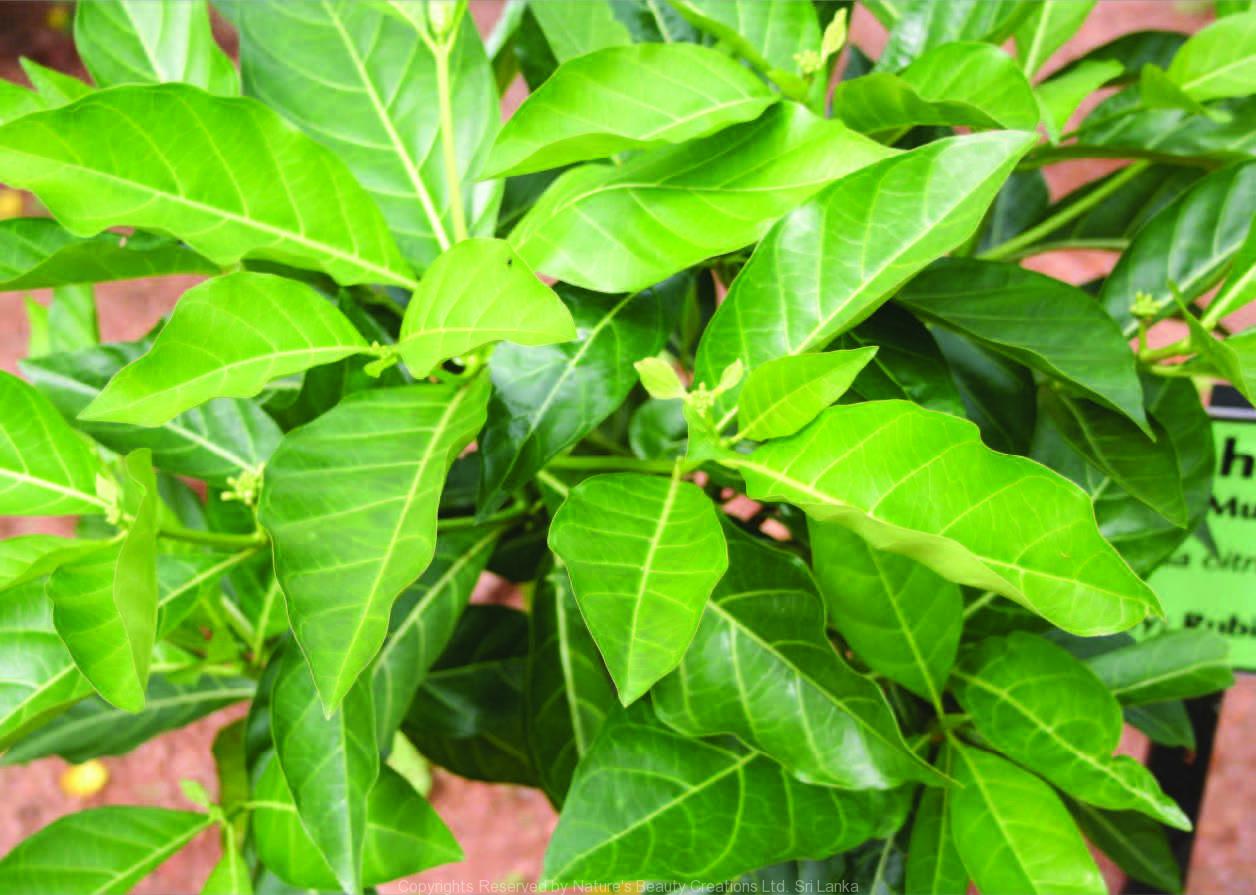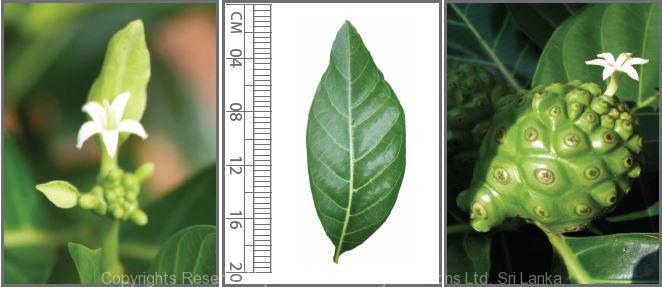

Traditional Knowledge
Useful plant parts :
Fruit and wood
Uses in traditional medicine :
- Juice of fruits in salt water is used as a mouthwash to treat bleeding gums
- Half cup of wood decoction is taken twice a day for fever caused by micro-organisms
- Acts as a cathartic
- Used in the treatment of chronic ulcers, snakebites, spongy gums, tuberculosis, diseases of liver, kidney and spleen
Scientific Research
Chemical constituents:
Trisaccharide fatty acid esters, polysaccharides, flavonoid, terpene and iridoid glycosides: narcissoside, asperuloside and its derivatives, borreriagenin, citrifolinin B, dehydromethoxygaertneroside, lignan: americanin A from fruit; phytol, cycloartenol, sterols and the ketosteroids from plant
Bioactivity :
Lyophilised aqueous extract of roots: analgaesic, sedative; alcohol extract of fruits: anti-inflammatory; polysaccharides: antitumour; extracts of leaves, fruits and roots: antioxidative; crude ethanol extract of plant: antitubercular activity
Clinical:
1 to 4 oz of fruit juice taken daily could potentially reduce the risk of cancer in heavy cigarette smokers
References : Basar, S. et al., (2010), Analgesic and Antiinflammatory Activity of Morinda citrifolia L. (Noni) Fruit, Phytotherapy Research, 24, 38–42. Hirazumi, A. and Furusawa, E., (1999), An Immunomodulatory Polysaccharide-Rich Substance from the Fruit Juice of Morinda citrifolia (Noni) with Antitumour Activity, Phytotherapy Research, 13, 380–387. Liu, G. et al., (2001), Two Novel Glycosides from the Fruits of Morinda Citrifolia (Noni) Inhibit AP-1 Transactivation and Cell Transformation in the Mouse Epidermal JB6 Cell Line, Cancer Research, 61, 5749. Peter, P. I., (2007), Clinical Research on Morinda citrifolia L. – Noni, Noni Research Clinical Journal, 1, 1-2. Phakhodee, W., (2012), Distribution of naturally occuring anthroqui- nones, iridoids and flavonoids from Morinda genus, Chemistry and biological activity, Walailak journal of science and technology, 9(3), 173-188. Saludes, J. P. et al., (2002), Antitubercular constituents from the hexane fraction of Morinda citrifolia Linn. (Rubiaceae), Phytotherapy Research, 16(7), 683–685. Sang, S. et al., (2001), Flavonol Glycosides and Novel Iridoid Glycoside from the Leaves of Morinda citrifolia, Journal of Agricultural and Food Chemistry, 49, 4478-4481. Su, B. N. et al., (2005), Chemical Constituents of the Fruits of Morinda citrifolia (Noni) and Their Antioxidant Activity, Journal of Agricultural and Food Chemistry, 68, 592-595. Wang, M. et al., (1999), Novel Trisaccharide Fatty Acid Ester Identified from the Fruits of Morinda citrifolia (Noni), Journal of Agricultural and Food Chemistry, 47, 4880-4882. Wang, M. Y. et al., (2009), Morinda Citrifolia (Noni) Reduces Cancer Risk in Current Smokers by Decreasing Aromatic DNA Adducts, Nutrition and Cancer, 61(5), 634–639. Younos, C. et al., (1990), Analgesic and Behavioral effects of Morinda citrifolia, Planta Med, 56, 430-434. Zin, Z. M. et al., (2002), Antioxidative activity of extracts from Mengkudu (Morindacitrifolia L.) root, fruit and leaf, Food Chemistry, 78(2), 227–231.
Copyrights Reserved By
Natures Beauty Creations




